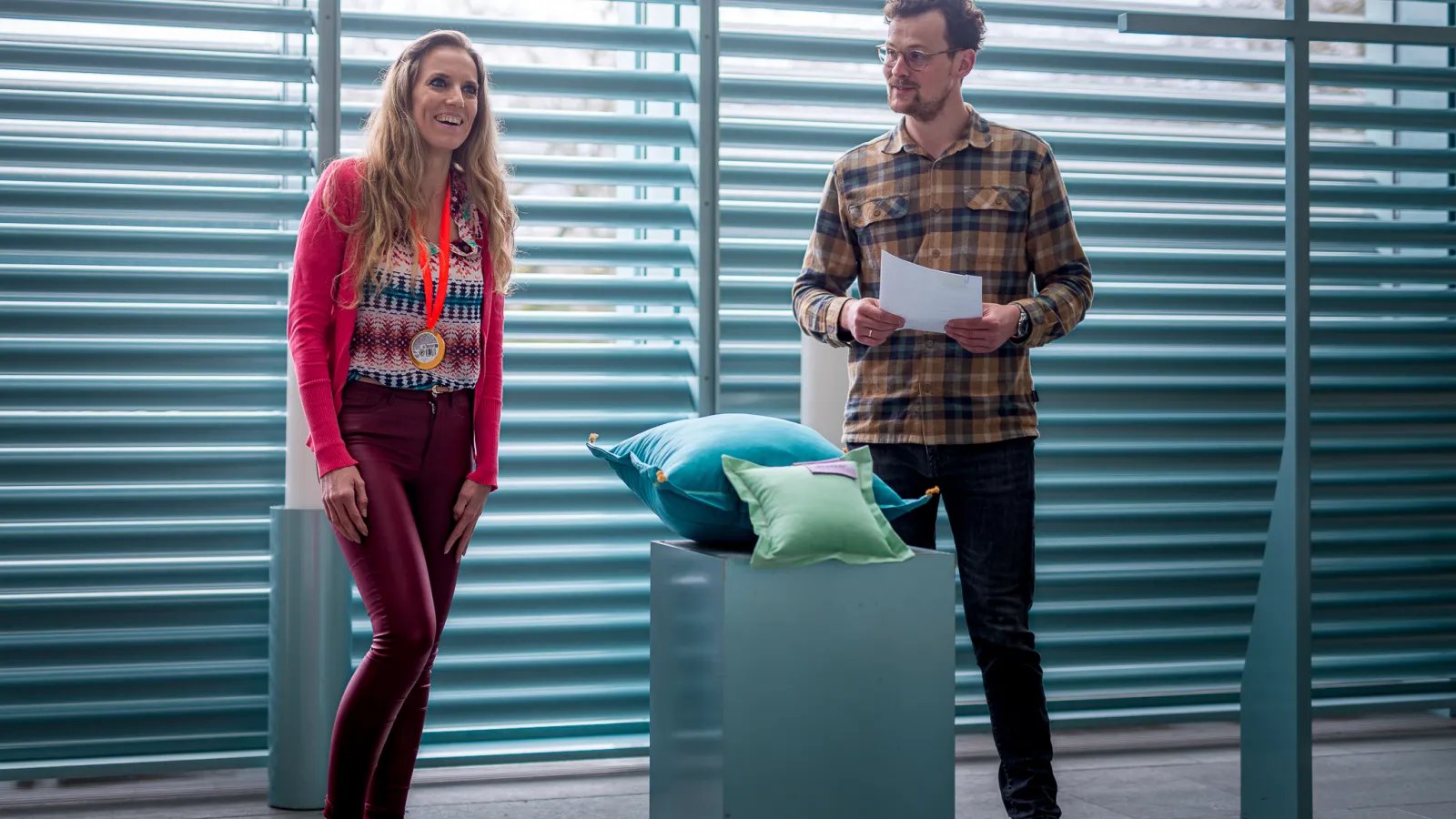sepulcrum – Biodegradable Urns for Humans or Animals
In the "sepulcrum" seminar, contemporary and biodegradable urns for humans or animals were designed in cooperation with the family business and urn manufacturer Völsing. In a final presentation with jury meeting at the Baumschulenweg crematorium, the best urn designs were awarded prizes.

- Fred Völsing (Manager, Völsing KG)
- Hendrik Thiele & Leo Ritz (Junimond Funerals Berlin)
- Dr. Claudia Banz (Curator, Museum of Decorative Arts Berlin)
In our modern, enlightened and scientifically oriented world, which strives for the ideals of youth, health and performance, there is hardly any room left for the topic of "death and dying". Every year, 50 to 60 million people pass away in this world. Most people are buried in some way, usually cremated or interred. Cremation is one of the oldest forms of burial known to mankind. The first cremations took place around 3000 BC.
The urn, a vessel for holding the ashes of a dead person, is, like the coffin, part of our last "place" that we come in touch with as human beings. If you look at the conventional urn selection of many funeral homes, the number of aesthetically questionable and unfashionably designed urns is frightening. However, urn design offers much potential for formal as well as material-technical innovations.
In the "sepulcrum" seminar at the Design Department at the University of Applied Sciences Potsdam, contemporary and biodegradable urns for humans or animals were designed and created under the direction of Prof. Silvia Knüppel (Professor of Product & Perspective) and in cooperation with the family business and urn manufacturer Völsing.
The students dealt intensively with the topic of sepulchral culture, the cultural and material handling of death, and with experts such as funeral directors and grief counsellors. An excursion to the Völsing company in Giesen and individual field research were part of the seminar.
The winners of the project were
- 1st prize: Stephanie Mann – urn design "sana".
- 2nd prize: Florian Albrecht – urn design "silent smoke"
- 3rd prize: Franziska Cram – urn design "Muutos" and second 3rd prize: Sahra Lietzkow –urn design "Pinus"'
Jury:
Prof. Hermann Weizenegger (Professor for Industrial Design, FH Potsdam).
Fred Völsing (Manager, Völsing KG)
Hendrik Thiele, Leo Ritz (Junimond Funerals Berlin)
Dr. Claudia Banz (Curator, Museum of Decorative Arts Berlin)
Project management: Prof. Silvia Knüppel, Anne Boenisch (workshop management)
Participants: 11 students from the product design programme

